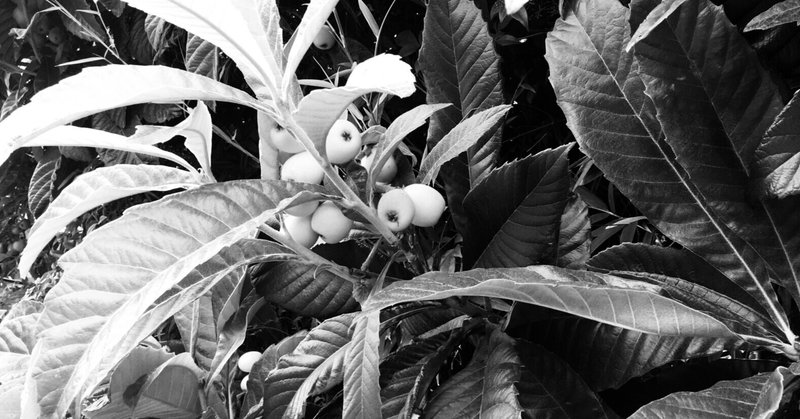
歌碑のたね

(English follows Japanese!)
日本語が5音、7音で区切れる不思議。
その昔、人はハミングで感情を伝え合っていたという説があります。
そこに言葉がのって、言語となっていったとのこと。
ならば、5音、7音は唄の音節である、と。
能を観に行くと、そんなことを実感します。
あくまで素人である私の楽しみ方ですが、ストーリーを頭に入れて、謡の意味を追わず、ハナウタだと思って感情を追うように舞台を見ていると、感情の流れが物語の流れとなって入ってきます。

犬王(アニメーション監督:湯浅政明 原作:古川日出男「平家物語犬王の巻」)
室町時代を舞台に、琵琶法師・友魚と実在した能楽師・犬王のおはなし。
アニメーションも、小説もとてもおもしろかった。
平家物語(アニメーション監督:山田尚子 原作:古川日出男訳「平家物語」)
犬王に続きアニメーションを拝観。こちらもとてもおもしろかった。
見届け、語ることで紡いできた古典文学が下敷になっている作品の、この新しさは何であるか、と。

最古の文字。
紀元前3400年〜3000年頃メソポタミア文明、シュメール人による税の記録簿。
同時期の古代エジプト文明での聖刻文字、神官文字。
後に聖刻文字や神官文字が変化して細かな表現ができるようになり、多くの文学テキストが書かれるようになるのが紀元前650年頃。

2億6000万年前。
5億4200万年前〜5億3000万年前に生物の爆発的な多様化が進むが、ペルム紀と呼ばれる2億6000万年前に90%〜95%が絶滅する。その絶滅にかかった時間およそ20万年。
東北地方では宮城県一帯にペルム紀の地層が多く見られます。アンモナイトの宝庫だそう。
私たち人類の時間なんて、ながい時間の上のほんとうに少し。

「祝福がある、ということを。」の中で私はこう書きました。
「祝福」は生きていく上でその人に何をもたらすのか、その人が生を終える時、又はその後の残された世界でどのようなものになっていくのか、、、。そんなことを考え続けながら作品制作をしています。
又、「記憶の墓標、そして和歌」の中ではこうも書いています。
人がその生を終える時、「確かに生きてきた」というしるしになるのは、その人が出会い触れてきた「美しさ」なのではないか、と考えています。
「歌碑」をテーマに、記憶の墓標シリーズの次の展開を思索・試作中なのです。
アーティスト、なんて言うと感性とかインスピレーションだけでものを創っていると思われがちですが、案外そうでもないんですよ。
今回は、種になるであろうものごとをつらつらと。
読みにきてくださってありがとうございます。
次回は2月19日、雨水の頃更新します。
参考文献:
・「歌うネアンデルタール―音楽と言語から見るヒトの進化」
ミズン・スティーヴン著/熊谷敦子訳/早川書店
・「平家物語 犬王の巻」古川日出男作/河出書房新社
・劇場アニメーション「犬王」公式サイト
・TVアニメ「平家物語」公式サイト
・「サピエンス全史上・下」ユヴァル・ノア・ハラリ著/柴田裕之訳/河出書房新社
・「東北大学総合学術博物館」公式サイト
Seeds of Poetic Monuments

There is a curious feature of the Japanese language that it can be separated by five or seven syllables.
There is a theory that people used to communicate their feelings by humming.
The five and seven syllables are the remnants of the syllables of songs.
When I go to see a Noh performance, I realize this.
This is just my way of enjoying Noh as an amateur, but if you keep the story in mind and watch the performance as if it were a hanauta and follow the emotions, without following the meaning of the songs, the flow of emotions will come in as the flow of the story.

Inu-oh (Animation Director: Masaaki Yuasa, Original story: "The Tale of the Heike, Chapter of Inu-oh" by Hideo Furukawa)
Set in the Muromachi period, this is a story about a biwa player, Tomogyo, and an actual Noh player, Inuoh.
Both the animation and the novel were very interesting.
The Tale of the Heike (Animation Director: Naoko Yamada, Original Story: "The Tale of the Heike" translated by Hideo Furukawa)
It was also very interesting.
I wondered what is newness of a work that is based on classical literature, which has been spun by witnessing and telling stories.

The earliest writing.
A record book of taxes by the Sumerians, Mesopotamian civilization, circa 3400-3000 B.C.
Hieroglyphs and hieratic in the ancient Egyptian civilization of the same period.
Hieroglyphs and hieratic were later changed to allow for detailed expression, and many literary texts were written around 650 BC.

260 million years ago.
Between 542 and 530 million years ago, there is an explosion of diversification of organisms, but 90% to 95% of them become extinct before 260 million years ago, which is called the Permian period. The extinction took about 200,000 years.
In the Tohoku region, there are many Permian strata in the Miyagi Prefecture area. It is said to be a treasure house of ammonites.
Our time as human beings is just a little over a long period of time.

In"That there are blessings in the world you have.",I wrote ,
What will these "blessings" bring to the person in life, and what will they be when the person ends his/her life, or in the world that remains afterwards?
I keep thinking about such things.
In "Tombstone of Memory and Waka", I also wrote,
I believe that when a person finishes his or her life, it is the beauty that he or she has encountered and touched that will be a sign that he or she has indeed lived.
With the theme of "poetic monuments," I am now contemplating and prototyping the next development of the series of gravestones of memory.
People tend to think of artists as creating things based on sensibility or inspiration, but this is not the case.
In this issue, I would like to talk about some of the things that will become the seeds of this series.
サポートいただいたお金は、文化と美術の水脈を辿るべく、書籍や美術館代として使わせていただきます。記事として還元いたします。
